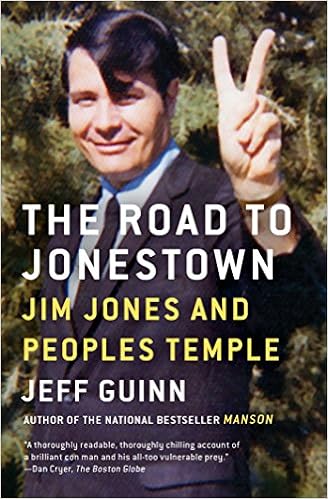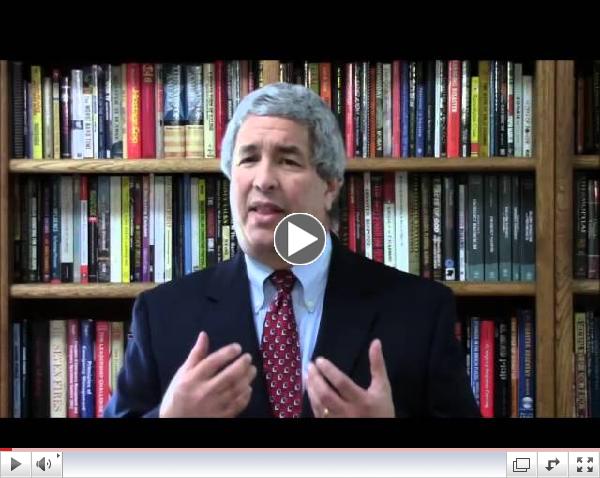|
Exploring Emergency Management & Homeland Security
|

The 2019 National Preparedness Report, or 'How Are We Measuring Preparedness?'
by Timothy (Tim) Riecker
FEMA recently released the
2019 National Preparedness Report. Simply put, I'm confused. Nothing in the report actually lines up with doctrine. It leaves me wondering how we are actually measuring preparedness. So what's the issue?
While the National Preparedness Report is initially structured around the five mission areas (Prevention, Protection, Mitigation, Response, and Recovery), the only full inclusion of the Core Capabilities in the report is a table on page 9, outlining usage of grant funds per Core Capability. After this, the Core Capabilities for each mission are listed in the title page for each mission area within the detailed findings for those mission areas. No detail of progress within these Core Capabilities is provided, however. With the absence of this analysis, we are not seeing data on the progression of preparedness, which, per the National Preparedness Report, is measured through the lens of each of the Core Capabilities.
This is further confused on pages 45 and 48, in particular, where tables list the Community Lifelines with some sort of correlated 'capabilities' (noted with a lowercase 'c'... thus not the Core Capabilities). These capabilities are not from any doctrine that I can find or recall, including the components and subcomponents for each Community Lifeline provided in the Community Lifelines Toolkit. For each of these they provide some analytical data, but it's unclear what this is based upon. The methodology provided early in the document does nothing to identify why this change in format has occurred or where these specific data sets come from, much less why they are deviating from the previous format and the standards provided through the
National Preparedness Goal.
Some perspective... It would seem logical that the National Preparedness Report would be assessing our national state of preparedness relative to the National Preparedness Goal, as it has since its inception. The National Preparedness Goal is structured around the five mission areas and the 32 Core Capabilities. With the emergence of the Community Lifelines and their inclusion in the
recent update of the National Response Framework, it makes sense that we will see Community Lifelines further integrated into standards, doctrine, and reports, but they have yet to be integrated into the National Preparedness Goal (the current version is dated 2015). We have not yet seen a comprehensive crosswalk between the Community Lifelines and the Core Capabilities, but it should be recognized that there are certain aspects, even if you just examine the Response Mission Area, that don't match up.
In an unrelated observation on the National Preparedness Report, the trend continues with citing after action reports from the year, but not actually providing any analysis of lessons learned and how those are being applied across the nation.
Bottom line... while there are some valuable nuggets of information included in this report, I find most of it to be confusing, as it lacks a consistent format on its own, as well as inconsistency with the existing standard of measurement as defined by the National Preparedness Goal. Why is this a big deal? First, it's a deviation from the established standard. While the standard may certainly have room for improvement, the standard must first be changed before the metrics in the reporting can be changed. Second, with the deviation from the standard, we aren't able to measure progress over time. All previous National Preparedness Reports have provided data within the scope of Core Capabilities, while this one largely does not. This breaks the possibility of any trend analysis. Third, there is no reasoning provided behind the capabilities (lowercase 'c') associated with each of the Community Lifelines in the report. It's simply confusing to the extent that it becomes irrelevant because the information provided is not within the existing lexicon which is used for measurement of practically everything in preparedness.
Simply put, this year's report is even more disappointing than those provided in previous years. In fact, since it doesn't conform with the current standard, I'd suggest it's not even valid. This should be far better.
Thoughts?
____________________________________________
Tim Reicker is a founding member, partner and principal consultant with Emergency Preparedness Solutions, LLC, a private consulting firm serving government, businesses, and not for profit organizations in various aspects of emergency and disaster preparedness.
|
|
Bernstein Crisis Management
|
 Avoiding the Somebody Else's Problem Field Avoiding the Somebody Else's Problem Field
by Erik Bernstein
In The Hitchhiker's Guide to the Galaxy, author Douglas Adams famously described the "Somebody Else's Problem" (SEP) cloaking device as the perfect way to hide even the most noticeable of items, writing, "An SEP is something we can't see, or don't see, or our brain doesn't let us see, because we think that it's somebody else's problem. That's what SEP means. Somebody Else's Problem. The brain just edits it out, it's like a blind spot."
While of course the SEP as a physical cloaking device is fictional, it's rare a week passes by without seeing some example of a virtual "Somebody Else's Problem" field creating crises in the real world. Take the recent case of an Air Canada passenger who was somehow not noticed still sleeping in their seat by flight crew after landing, not spotted by cleaning crew or maintenance staff, then left alone on the plane as it was towed and parked far from the terminal. Can you tell me that situation is anything else but the result of quite a few experienced employees somehow determining that fully clearing the cabin before the aircraft headed out to pasture was Somebody Else's Problem?
The SEP issue doesn't only touch on human error among staff, but also frequently appears in business leadership. For example, when issues like public criticism or aggressive litigation begin to impact some of the players in any given industry, the first instinct for those left untouched is often to breathe a sigh of relief because what happens at another company must be Somebody Else's Problem...right?
Not so much. What's often missed during these times is that, though these are
currently Somebody Else's Problems, the fact that they're happening to organizations quite similar to your own - perhaps sharing business models, customer bases (and they expectations that come with), suppliers, tax structures, and on and on - means you're at risk of sharing those same problems tomorrow.
What's the lesson here? Never assume any issue is 100% Somebody Else's Problem until you've investigated fully, put backups in place to catch the inevitable system failures and, most importantly, take steps to ensure these are part of your day-to-day business not only in protocol, but also in practice, with regular training and reminders for everyone from the front lines to the C-suite. While it's fun to imagine the SEP hiding an outlandish spacecraft in the world of Douglas Adams and the Hitchhiker's Guide. trust me when I say it's far less enjoyable to experience it in action creating crises for your organization here on Earth.
______________________________________________
Erik Bernstein is Vice President of Bernstein Crisis Management, a specialized firm dedicated to providing holistic strategies for managing crisis situations.
|
|
|
| PrepTalks: Aaron Titus "Let the Community Lead Rethinking Command and Control Systems" |
Both Tim Reicker and I have written about issues with the Incident Command System when it comes to integrating organizations that are trained in its use. In this PrepTalk,
Aaron Titus, President of Mountain West VOAD, challenges emergency managers to acknowledge the limitations of command and control systems and to rethink how we interact with the community. It is a view from the other side of the table that provides food for thought. |
The following are excerpts from my blog
Canton on Emergency Management. Please visit my blog to see the rest of my articles.
Trump blames California for poor forest management but whose policy is it really?
|

M
y Blogs
Follow Me
|
|

Welcome to the December edition of E
mergency Management Solutions
.
I often remind colleagues who are disheartened at a seeming lack of progress that it is good to pause and look back to how far you come. Emergency managers tend to focus on the future and we sometimes forget what we have accomplished. The start of a new year is a good time for reflection.
This year, as most years, I suppose, has been a full one, with many joys and tears. I had the pleasure of seeing my son graduate from college and the joy of attending my daughter's wedding to a good man. But I also shed tears at the loss of three good friends, all in the space of the last few months. It is a reminder that, as my guru Alan Weiss says, discretionary time is the only true wealth we have. Spend it wisely.
May the coming New Year be joyous and prosperous for you and yours and free from disasters.
Regards,
|
|
_
________________________________________________
Can We Really Save Everyone?
Rethinking Responsibility for People with Functional Needs
_________________________________________________
In
The Vision of The Anointed, his study on social policy, academic Thomas Sowell identifies two opposing views on government policy. The first assumes that all the resources to deal with social issues already exist and that applying them is merely a question of political will. The other view is more pragmatic; it recognizes that resources are finite, and trade-offs must be made in applying them to social problems.
These two oppositional views tend to play out in planning for functional needs populations. On the one hand, the public, particularly advocates for people with disabilities, demand that all resources necessary be directed to aiding at-risk populations in disasters. On the other hand, emergency managers, who must meet these needs, have limited resources with which to respond to a crisis. Maybe it is time to acknowledge that responsibility for resolving this problem does not belong solely to emergency planners.
______________________________
_______________________
________
If you are having trouble viewing my featured article, try clicking on the link at the top of the page. You can always find my articles in the white paper section of my blog site, Canton on Emergency Management.
|
|
Resources
FEMA RELEASES 48 UPDATED CORE CAPABILITY DEVELOPMENT SHEETS
The Federal Emergency Management Agency (FEMA) released a new set of 48 Core Capability Development Sheets updated with standardized capability targets for the Prevention, Protection, and Mitigation Mission Areas. The updated sheets also include a reference to PrepTalks on each mission area cover sheet and updated URLs and training.
First released in June 2017, each Core Capability Development Sheet provides the core capability definition and tasks, relevant training, example capability targets, typed resources, critical planning partners, validation techniques, and additional organizations that support the development of the specific core capability. By using this information, jurisdictions can improve their capabilities and close gaps identified in the Stakeholder Preparedness Review or other assessments.
The FEMA Core Capability Development Sheets are posted on the FEMA Technical Assistance Program Web site and on MAX.gov in the password-protected Unified Reporting Tool that state, local, tribal, and territorial jurisdictions use to develop their Threat and Hazard Identification and Risk Assessment.
FEMA RELEASES NIMS NQS GUIDE FOR COACHES AND EVALUATORS
FEMA HAS released the "National Incident Management System National Qualification System Supplemental Guide for Coaches and Evaluators." This document provides processes, procedures, and tools to assist authorities having jurisdiction develop and maintain coaching and evaluating programs as part of the overall qualification process.
The "National Incident Management System National Qualification System Supplemental Guide for Coaches and Evaluators" is available on FEMA's website at
https://www.fema.gov/national-qualification-system
.
___________________________________
Professional Development Opportunities
June 1-4, 2020
Emmitsburg, MD
The 2020 symposium theme is "Imagination, Improvisation, and Innovation in Emergency Management Education."
Nov. 13-18, 2020
Long Beach, California
The goal of the IAEM Annual Conference is to improve knowledge, competency level and collaborative skills. IAEM accomplishes this by attracting relevant high-profile speakers to address current topics and practical solutions.
|
|
 The Road to Jonestown: Jim Jones and Peoples Temple The Road to Jonestown: Jim Jones and Peoples Temple
On November 18, 1978 over 900 hundred members of the Peoples Temple died in the jungle of Guyana on the orders of their leader, Jim Jones. Jones was a charismatic preacher who had built a personal religious cult that amassed considerable wealth and political clout before it all started to come apart.
While this book does not deal with emergency management directly, it is a fascinating study in human nature. Jones came from an impoverished Midwestern family in a rural community, yet through a combination of charisma and the ability to understand people's motivations, he made significant contributions to the civil rights movement in Indianapolis and founded a church that played a major role in San Francisco politics. However, his personal flaws, particularly his refusal to delegate any aspect of Temple business to subordinates, coupled with hubris and escalating drug use, would be his undoing.
Historian Jeff Guinn has written a book that is both comprehensive and fascinating. It makes for easy reading while communicating a wealth of information. There are a lot of lessons here about what motivates people and how failures in leadership can lead to tragedy. Highly recommended.

______________________________________
|
Emergency Management: Concepts and Strategies for Effective Programs
Second Edition
by Lucien G. Canton
This book looks at the larger context within which emergency management response occurs, and stresses the development of a program to address a wide range of issues. Not limited to traditional emergency response to natural disasters, it addresses a conceptual model capable of integrating multiple disciplines and dealing with unexpected emergencies.
|
|
Need a speaker for your next conference? I offer keynotes, seminars and workshops.
 |
|
Three Reasons Why I'm the Right Speaker for Your Conference
|
|
|
Speaking Engagements
Emergency Preparedness & Response Master Class
Indianapolis, IN
April 5, 2020
|
|
| |
|